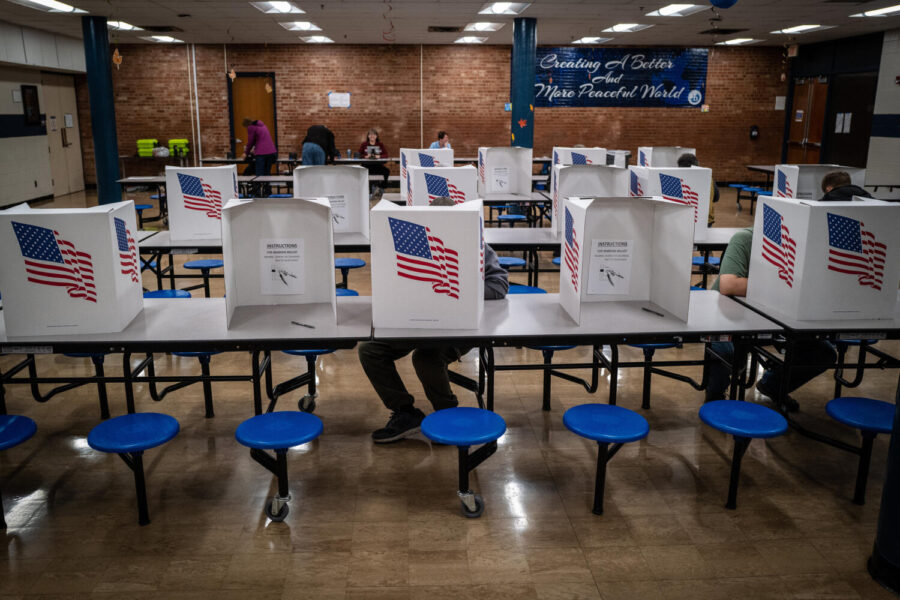The Trump endorsement: a lightning rod of consternation or a political buoy? This is the question Republicans face when they receive the Trump endorsement. Donald Trump is one of the most polarizing figures in modern American politics. And as such, his endorsement can be a polarizing factor for potential voters. According to the New York Times, 82% of Trump-backed candidates won (important to note that Trump backed mostly incumbents and those favored to win), while eight of the 10 Republicans who voted for Trump’s impeachment lost or retired. All five of the candidates Trump endorsed in very competitive seats suffered defeat, and the five races the Trump super PAC invested in also lost. This presents a complicated picture, but understanding the Trump endorsement gives us great insight into the 2022 midterm election cycle.
In their study, Andrew O. Ballard, Hand J. G. Hassell, and Michael Heseltine (the authors) examine the Trump endorsement in the 2018 election cycle. The authors come to some very thought-provoking and nuanced conclusions. They find that Trump’s endorsement did not coax more voters to the polls for his candidates – however, it did increase the support among Trump supporters. Interestingly, his endorsement did drive up donations for the candidates in question while simultaneously producing a backlash effect that resulted in increased donations to their partisan opponents. This seemed to produce a nullifying effect of the increased funding for Trump-backed candidates. One of the most intriguing observations by the authors is that Trump tended to endorse candidates positioned to win or those in competitive races. Overall, they found that Trump’s endorsement had a negative effect on electoral results.
Utilizing these observations, we can see similar trends in the 2022 midterm election cycle among Trump endorsements. On the surface, 82% of Trump-backed candidates winning seems like a positive. However, similarly to 2018, Trump mostly endorsed candidates who were favored to win. In fact, when Trump personally involved himself in competitive races, his candidates lost. Trump’s endorsements are driven by the effect it has on his overall narrative, allowing him to position himself as a “winner” or to exact his revenge on those he feels have wronged him, such as those that voted to impeach him following his treasonous actions on Jan. 6. The Trump endorsement is a double-edged sword at best. While providing a boost for Trump-backed candidates in the primary election, it significantly impacts those same candidates deleteriously in general elections waged in districts with highly competitive seats. It is worth noting that the Democratic National Committee (DNC) spent millions on Trump-backed candidates in hopes of improving the Democratic candidate’s chances in the general election.
Trump endorsements are critical to primary elections among Republicans. According to The Washington Examiner, of the 236 candidates that Trump endorsed in the 2022 primary elections, 217 won, which is a 92% success rate. It is notable that many Trump-endorsed candidates endorsed “the big lie” that Trump won the 2020 election. According to the New York Times, a staggering 159 of the candidates were election deniers. While terrifying and worrying, this is anything but surprising. Trump demands loyalty and unwavering support from his co-partisans, and he has convinced many Republican base voters of his lies about the 2020 election, which in reality, he lost.
Trump’s effect on Republican base voters is deep and pervasive. In his analysis, Daniel J. Galvin explores how Trump has mobilized his base. He concludes that Trump has diverged from the path of previous Republican presidents, who concentrated efforts on building a larger coalition of Republican voters, instead focusing on shoring up like-minded Republican base voters and expelling diverse voices from the party. By doing this, he has created a coalition of sycophants and apologists ready and willing to excuse his behavior no matter how anti-democratic it may be. This troubling trend has resulted in creating a contentious primary election cycle for Republicans. In order to win a Republican primary, it is more important to be aligned with Trump, no matter how extreme, than it is to be well-positioned to win a general election.
This explains why all the Trump-backed candidates lost in contests for competitive seats in the general election. By pushing further toward Trump to win over Republican base voters, they concurrently pushed away important groups of voters, such as independents, that make up the overall general election constituency. This effect appears more pronounced in statewide races, such as those for Senator and Governor, which have a larger and more diverse constituency, and races that only occur within specific electoral districts for the House of Representatives, part of the legislative branch of government, which has a declining number of competitive seats due to more homogenous constituencies and gerrymandering.
Research has shown that Trump has mainstreamed far-right conspiracies once thought to be only on the fringe. By mainstreaming these conspiratorial and fringe ideas, Trump has created a more extreme voter base. This change in the voter base has created a necessity for candidates in primary elections to adopt more extreme stances that become very problematic in general elections. The intricate relationship between the Trump endorsement and the Republican primary election constituency, compared to the more diverse general election constituency, illustrates the complicated picture that a Trump endorsement poses to potential candidates. We can see this relationship in action in the 2022 midterm elections.
The candidacy of Dr. Mehmet Oz in Pennsylvania demonstrates how difficult it is to pivot from the primary election viewpoints when you are a general election candidate. Despite his full-throated endorsement of Trump’s 2020 election lies, Oz attempted, just days later, to distance himself from these claims. For many voters, this created feelings of whiplash and disingenuity. Oz was well aware that the extreme viewpoints expressed in the primary election were unable to win a general election in Pennsylvania. Oz was unable to shake the image he cultivated as Trump’s chosen candidate, short-circuiting his ability to win over the critically important independent constituencies of the state’s general election constituency.
Oz was not the only candidate who attempted to pivot after his primary election win, as Blake Masters in Arizona attempted to as well. Just days following his primary election win, Masters tried to scrub his website of language in support of Trump’s 2020 election lies, the racist “great replacement” theory, and his hardline anti-abortion viewpoint. Masters, similarly to Oz, knew that these viewpoints were not going to win a general election in Arizona. He recognized the need to support of the ever-so-critical independent constituencies in the state. Despite this attempted burnishing of his image, Masters was unable to shake the public impression of being a hypocrite and a “flip-flopper,” which ultimately cost him the election. Democrats John Fetterman and Mark Kelley, respectively, went on to win the seats in Pennsylvania and Arizona.
The Trump endorsement creates a complicated road to victory for Republican candidates vying for competitive seats in the general election. The necessity to align with Trump to win the primary election handicaps the candidates in their push to win the general election. The pivot from extreme far-right viewpoints necessary to win over Republican base voters in the primary election proves exceedingly difficult for candidates, creating an impossible obstacle to winning over independent constituencies in the general election. Despite the modern level of gerrymandering engaged in by both parties – resulting in the reduction of the number of competitive districts nationwide – independents remain a make-it-or-break-it constituency in competitive districts and statewide races. With the majority of Americans, according to Gallup, roughly 42% (between Nov. 9, 2022 – Dec 2. 2022), identifying as independents, their votes are more critical than ever.
While Trump has redefined what it means to be conservative, he has also mainstreamed extreme far-right fringe ideas and conspiracies to the peril of his own party. The Trump endorsement is calculated, and some may even say lazy, as he tends to support candidates that are more of a “sure thing.” What is illuminating is that when he supports competitive candidates, his endorsement fails cycle after cycle, proving him to only be popular among his loyal base voters and a threat to achieving Republican governing majorities. If Republicans wish to be a governing majority party, then they must end their obsession with Trump and Trumpism.


















